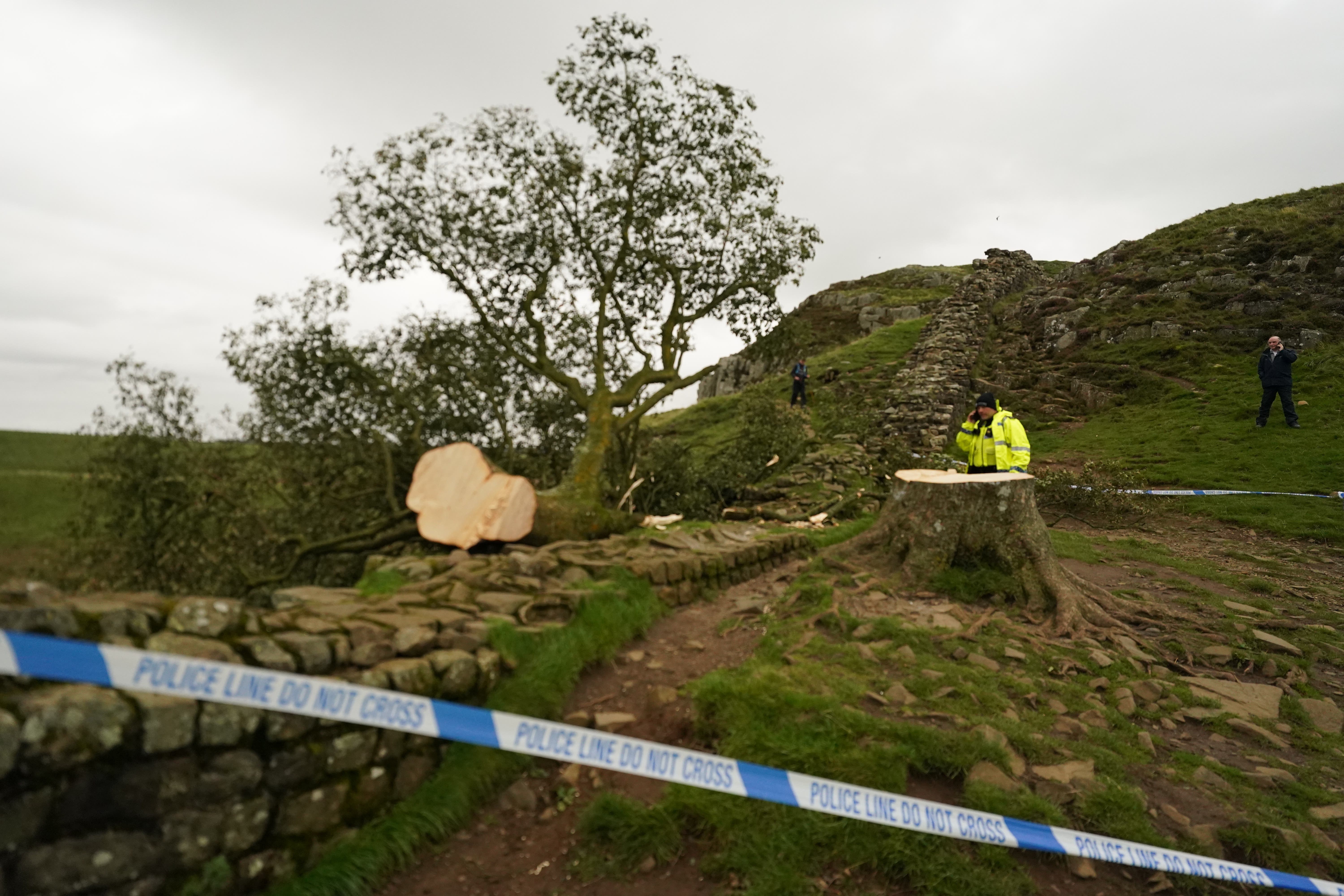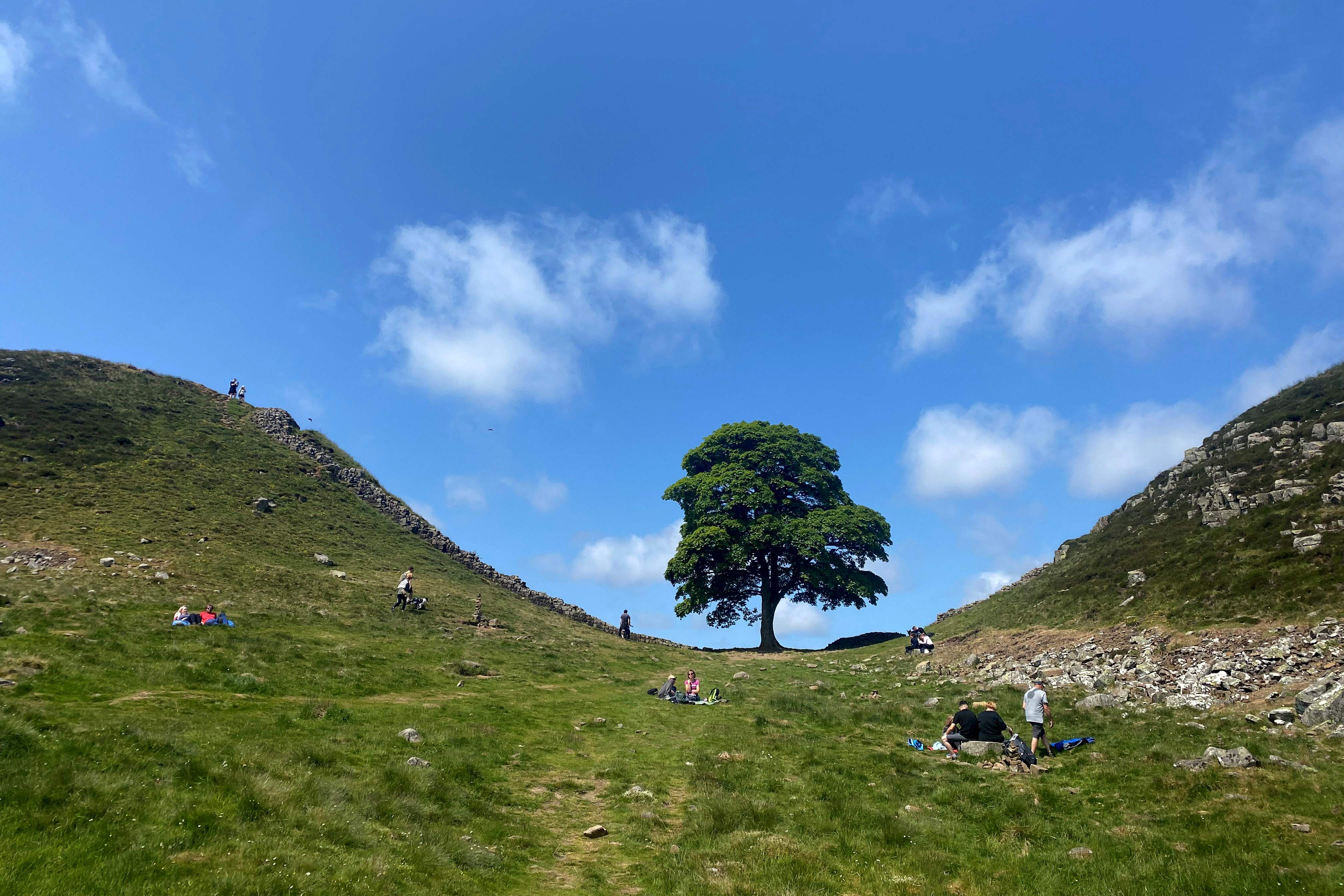‘If I’d have done a murder, I’d be getting less hassle’: Man accused of felling Sycamore Gap protests innocence
Walter Renwick says his life has taken a turn for the worse since he was accused of felling one of the UK’s most-loved trees
A man arrested after the Sycamore Gap tree was cut down has protested his innocence, claiming “he would get less hassle if he had committed murder”.
Former lumberjack Walter Renwick, 69, said he has taken to wearing a blonde Rod Stewart wig to hide his identity due to anger over the much-loved Northumberland tree’s destruction last month.
As a sad stump stands in the place of the former glory of Hadrian Wall’s most majestic tree, mystery continues to shroud the case, and nearly three weeks after the 27 September felling no one has been charged.

Arrested two days after the tree was cut down and then released on bail, Mr Renwick has told The Sunday Times he was watching Netflix at the time.
When police asked him if he was responsible for the Sycamore Gap vandalism, Mr Renwick said he replied: “Did I ’eck.”
“Whoever has done it is going to get 10 years for a tree,” he told the newspaper. “People walked past me and gave me these looks, like I’m a piece of s**t.
“If I’d have done a murder, I’d be getting less hassle, you know that?”
Describing himself as “the most boring person in the world” he said he didn’t know about the tree being cut down until his brother told him what had happened the night after.

The tree, believed to have been one of the most photographed in the country, was a popular hotspot for tourists and walkers.
Thought to have been planted by Newcastle philanthropist and lawyer John Clayton in the second half of the 19th century, it gained international recognition after featuring in the Kevin Costner film Robin Hood: Prince of Thieves.

It has been excavated on two occasions – between 1908 and 1911 and again between 1982 and 1987, when Roman remains linked to Hadrian’s Wall were found.
There has been an outpouring of emotion since the landmark was felled, with many suggestions on what could be done with the felled section, including making benches from the wood, a sculpture or souvenirs to sell.




